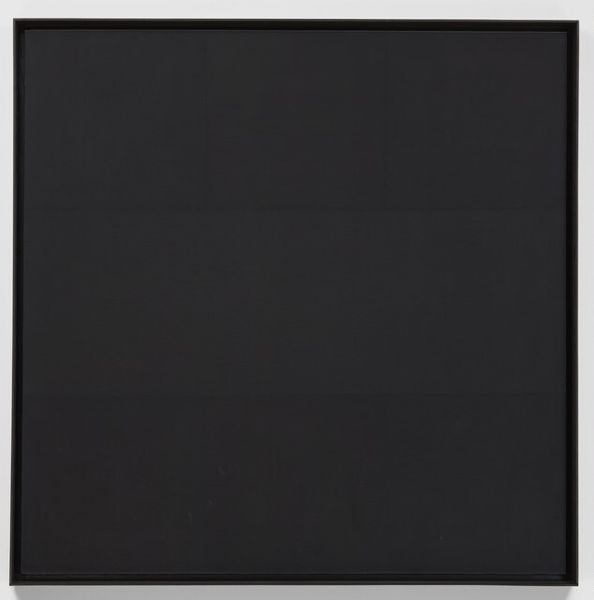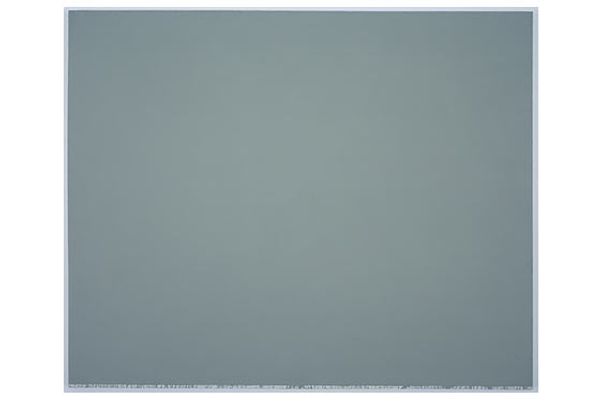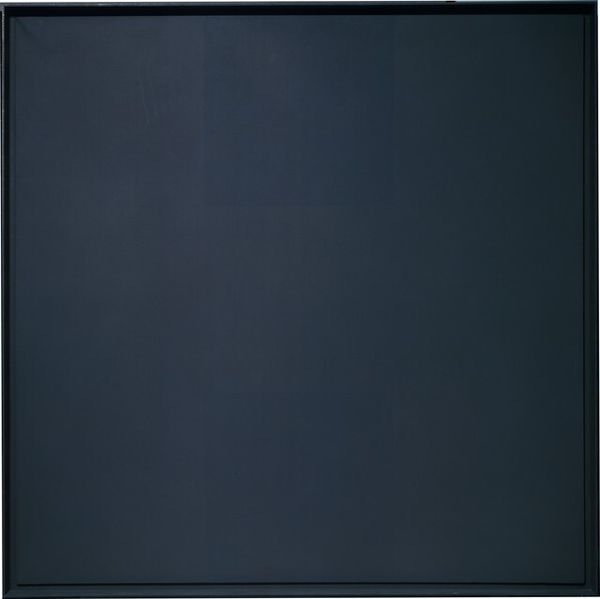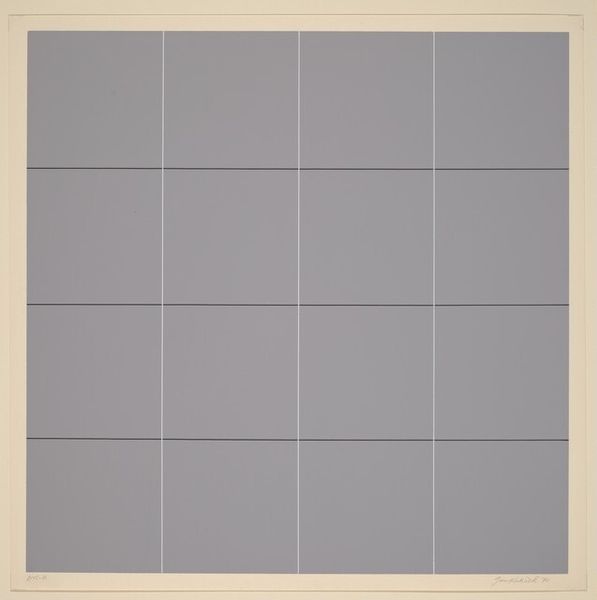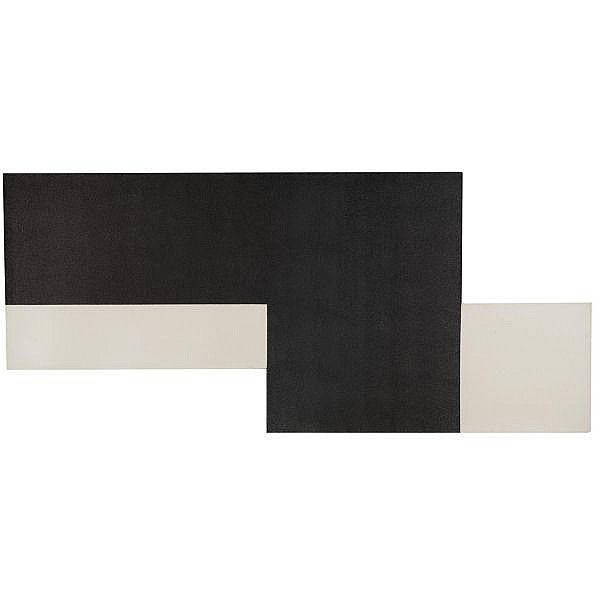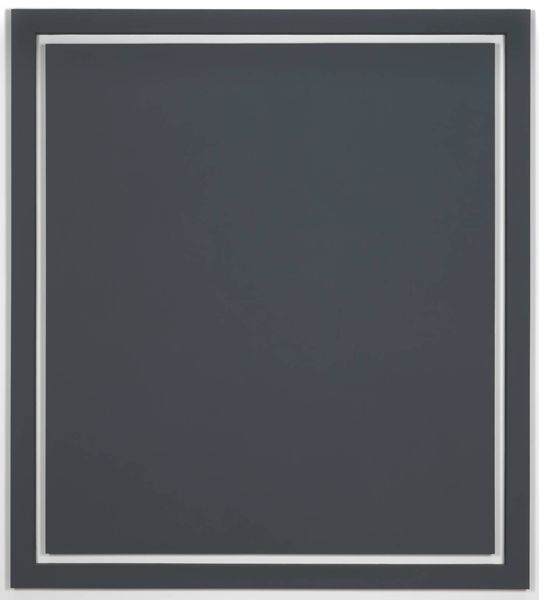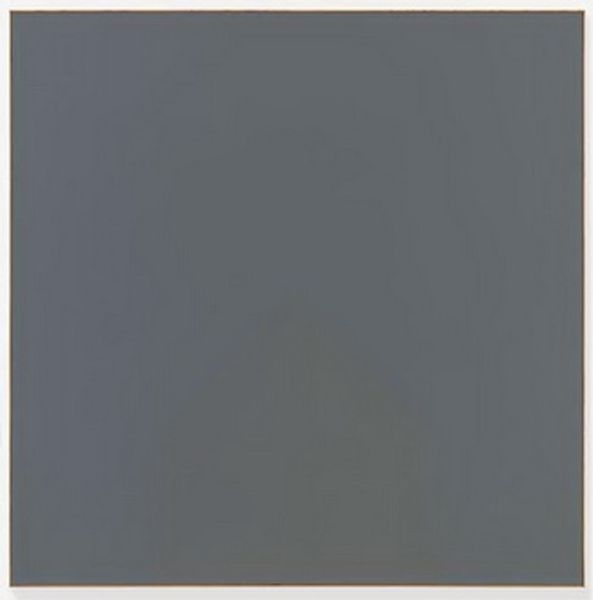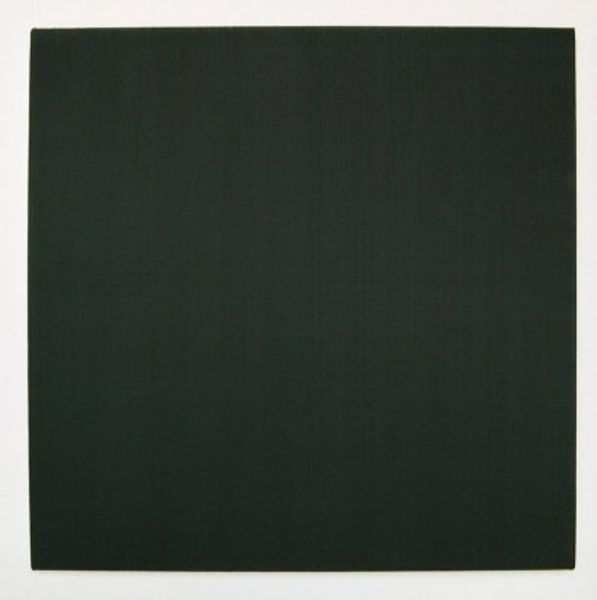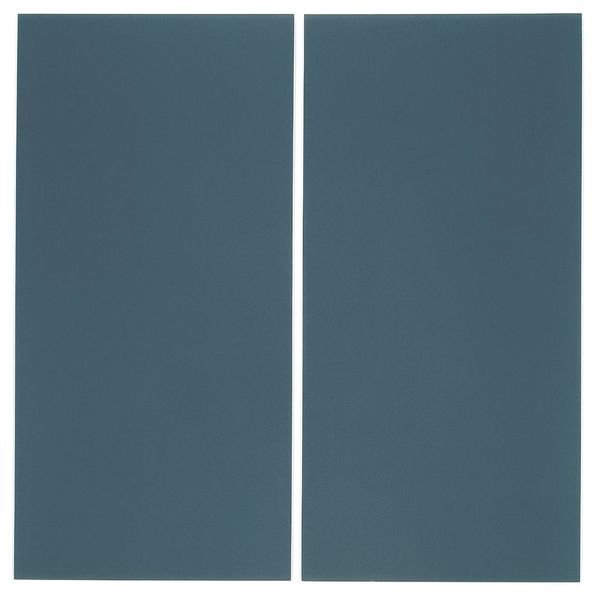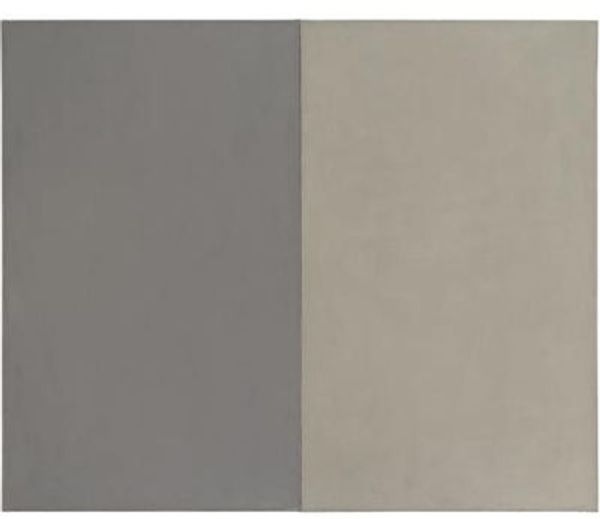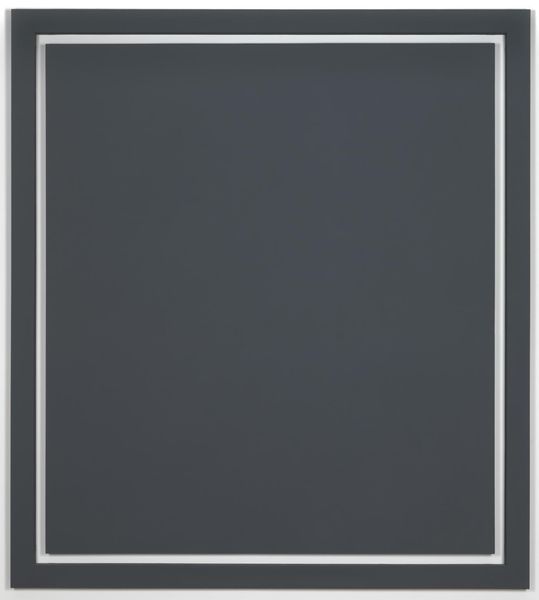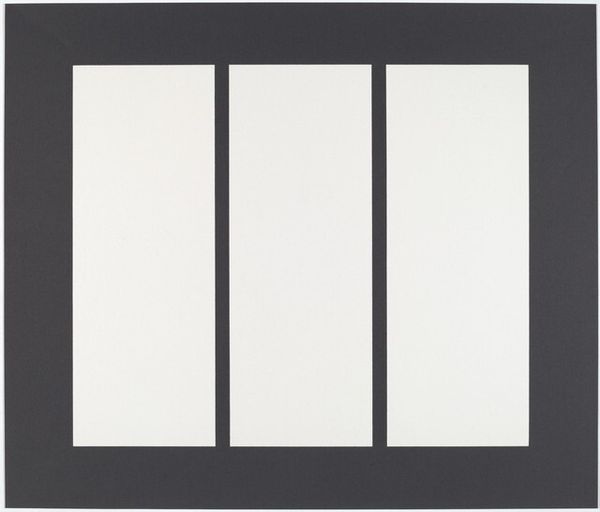
Copyright: Alan Charlton,Fair Use
Editor: Here we have Alan Charlton's "Border Painting (in 5 parts)" from 1995. It's a monochromatic painting, a somber grey rectangle framed by…more grey rectangles. It's minimalist, certainly, but also quite imposing. How do you interpret this work, with its starkness? Curator: The simplicity isn't a void but a challenge. How does a monochrome painting like this engage with the historical context of abstract expressionism, and even political themes of boundaries and exclusion? What societal forces might be mirrored in this emphasis on rigid forms and limited palettes? Editor: Boundaries and exclusion… that's interesting. I hadn't thought of that. It felt more formal, about line and shape. Curator: It is about form, certainly. But the choice to repeat a single tone across five panels also speaks volumes about cultural norms around visual experience and accessibility. Consider the role of art in a society often obsessed with colour and spectacle: is it meant to challenge this preoccupation, or reproduce it? Editor: I see what you mean. It's not just a painting, it's a statement. It makes me think about the visual language of power, and how even subtle choices like this limited palette can be interpreted as a kind of resistance. Curator: Exactly! How the artist chooses to express ideas is a political and cultural act that exists in the stream of modern history. These minimalist works help reveal a deeper critique within the art world, one questioning access and representation. Hopefully, this brief conversation reveals how historical art and contemporary themes are related. Editor: Absolutely! Thank you. I never would have considered so many cultural themes.
Comments
No comments
Be the first to comment and join the conversation on the ultimate creative platform.
